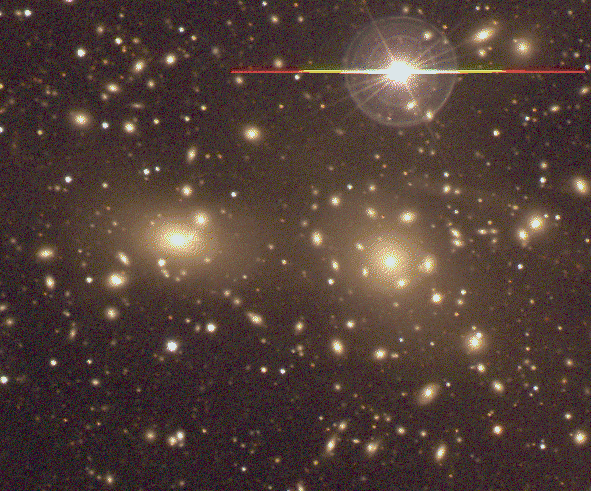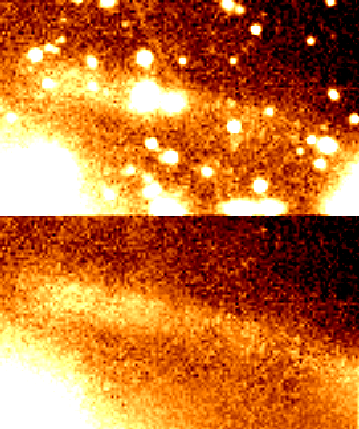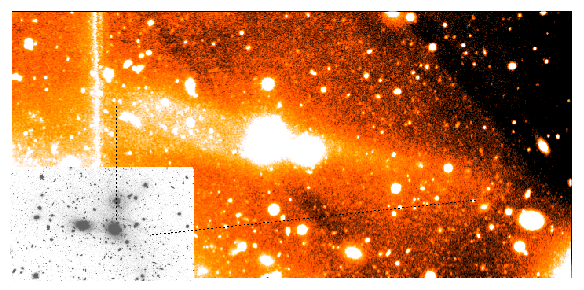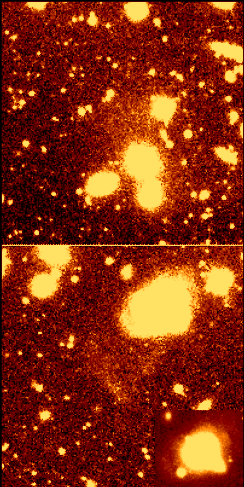Imaging the Coma Cluster
- Michael Gregg (U.C. Davis)
- Michael West (U. Hawaii, Hilo)
At a distance of 100 Mpc, Coma is the nearest example of a rich
cluster of galaxies. Once thought to be in virial equilibrium, Coma
is now understood to be a cluster in the making, with several subunits
in the throes of merging, making it a very dynamic and interesting
place to study.
We obtained wide field images of Coma using the 0.6 meter (24 inch!)
Burrell Schmidt telescope at Kitt Peak National Observatory. Despite
the small size of the telescope, the wide field, large pixel format is
excellent for detecting extended low surface brightness features.

|
Here is a pretty picture of the core of the cluster. This
is a true-color image made from the R, V, and B band Schmidt images,
approximating R-G-B.
Click on the image to see a full resolution version or here to see a
GIF image of an even wider field of view or,
if you prefer, a TIF image .
|
We noticed several unusual low
surface brightness features in our deepest R-band image.

|
The most spectacular is a plume of stars about 130 kpc (500,000 light
years) long in the heart of the cluster. That's 4 times the diameter
of the Milky Way! The total luminosity is not as great as our Galaxy;
the plume is the equivalent of about 3 Large Magellanic Clouds.
To get a better view of the "plume", the foreground stars and galaxies
can be digitally removed (lower panel). Click on the image to see a
better resolution version.
|

|
We then obtained much better images of the plume using the
Canada-France-Hawaii Telescope wide field CCD imager.
The new improved version reveals many details in the body of the
plume, perhaps dwarf galaxies and intergalactic star clusters in the
making.
|

|
Two other large, low surface brightness objects are also easily seen
in these cutouts from the Schmidt images of the Coma cluster. The
lower panel to the right shows a particularly interesting patch of
stars following in the wake of the spiral galaxy NGC4911 as it plunges
into the core of the cluster at more than 1000 km/s.
|
The plume and the other objects, including a fourth smaller arc
noticed by Trentham & Mobasher (1998) are most easily understood as
tidal debris that has been liberated through galaxy-galaxy or
galaxy-cluster interactions in the relatively recent past (within the
last several hundred million years). Over time, it will fade into the
background sea of stars that permeates the Coma cluster.
To try to understand the content and origin of the Coma tidal
debris, we have obtained WFPC2 images of NGC4911 and its wake of tidal
debris. We are pursuing spectroscopy of the objects in and around the
debris using the Keck Observatory; the redshifts of the objects can
place them in the cluster or the background.
albrecht@physics.ucdavis.edu



